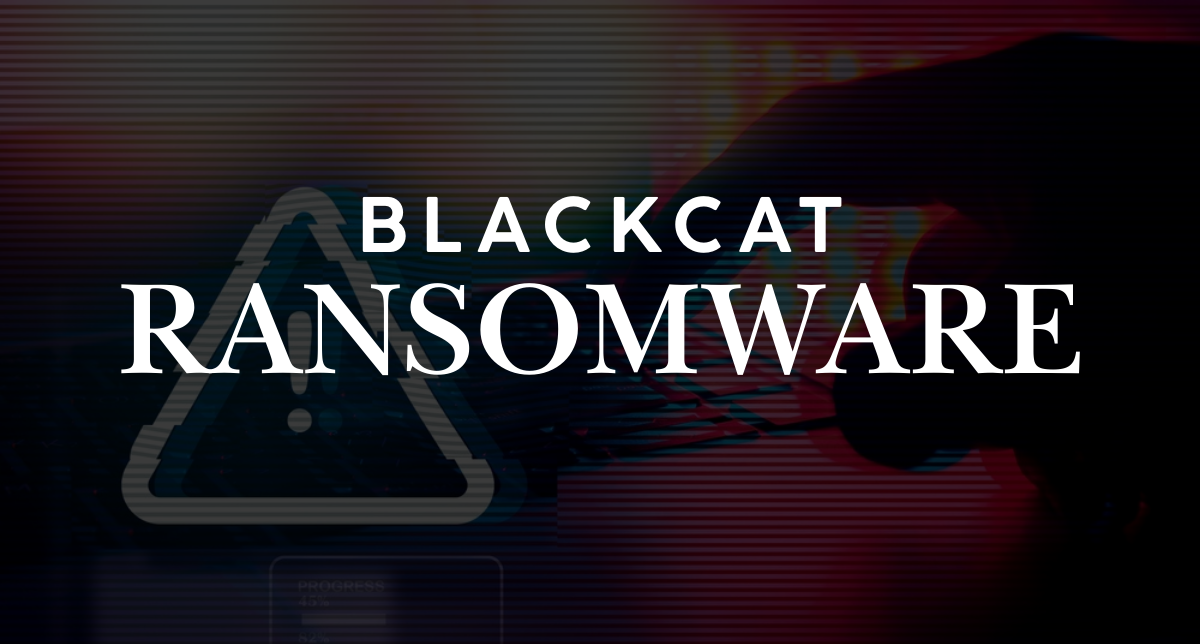Ransomware attacks are an escalating concern in the cryptocurrency industry, with the BlackCat ransomware group emerging as one of the most prominent players. Cybercriminals are increasingly targeting the crypto space, leveraging the anonymity and decentralized nature of digital currencies to evade detection and enforcement.
Cryptocurrencies are appealing to cybercriminals because they offer a degree of anonymity and facilitate cross-border transactions. These features make crypto the ideal payment medium for ransomware groups like BlackCat, which can mask their activities and avoid detection by authorities. The year 2024 has witnessed a significant uptick in the frequency and scale of ransomware attacks on the crypto ecosystem.
According to a report by Chainalysis, the scale of ransomware attacks this year is staggering:
- $1.9 billion in ransomware payments recorded by mid-2024, marking an 80% increase from the previous year.
- The average ransom demand surged by 30% in 2024, reaching nearly $6 million per attack.
These attacks are not limited to large corporations such as MGM Resorts and UnitedHealth. Increasingly, individual investors and smaller businesses are being targeted as cybercriminals employ advanced tactics, including “double extortion,” where they encrypt data and simultaneously threaten to release sensitive information if the ransom isn’t paid. This heightened sophistication is pushing the crypto industry to consider new defensive strategies.
Understanding BlackCat Ransomware Attacks
BlackCat ransomware, also known as Noberus or ALPHV, is a powerful malware developed by a group of Russian-speaking cybercriminals. Known for its advanced capabilities, BlackCat operates under a ransomware-as-a-service (RaaS) model, allowing affiliates to carry out customized attacks.
Since its emergence in November 2021, BlackCat has executed attacks on hundreds of organizations worldwide, including high-profile targets like Reddit in 2023 and Change Healthcare in 2024. The group’s modus operandi involves penetrating systems, encrypting critical data, and demanding substantial ransoms paid in cryptocurrency.
Modus Operandi of BlackCat
From the outset, BlackCat was designed to exploit a wide range of systems, targeting both Windows and Linux environments. Using the Rust programming language, BlackCat achieves fast encryption speeds and broad compatibility, allowing it to rapidly adapt and escalate attacks on vulnerable systems.
In 2024, BlackCat has intensified its efforts, often using double extortion tactics. In this model, data is both encrypted and stolen, with a secondary threat of leaking sensitive information if the ransom is not paid. This approach gives BlackCat substantial leverage over its victims, who face both operational disruption and potential data exposure.
What makes BlackCat particularly dangerous is its decentralized affiliate model. This model recruits hackers worldwide, enabling them to conduct attacks independently using customized payloads. This decentralized approach allows the group to exploit vulnerabilities in a highly targeted manner, resulting in devastating effects on victims.
Interesting Fact: The U.S. Department of State is offering a reward of up to $10 million for information leading to the identification or location of key figures within the BlackCat ransomware group.
How BlackCat Ransomware Operates
BlackCat ransomware is notorious for its strategic, multi-step attack framework. Here’s a breakdown of its operations:
- Initial Access: BlackCat typically gains access to systems via phishing emails, stolen credentials, or exploiting unpatched vulnerabilities.
- Establishing Persistence: Attackers install backdoors to maintain access and harvest credentials, enabling lateral movement across the network.
- Data Encryption: Using Rust, BlackCat encrypts essential files, rendering them inaccessible without a decryption key.
- Double Extortion: Data is exfiltrated before encryption, with attackers threatening to leak it if the ransom isn’t paid.
- Ransom Demands: Payments, usually in Bitcoin or Monero, are demanded to maintain anonymity, making it challenging for authorities to trace the transactions.
- Customizable Attacks: Affiliates can tailor the ransomware for specific victims, enhancing its stealth and effectiveness across both Windows and Linux platforms.
Victims are compelled to pay ransoms in cryptocurrency, which provides anonymity for attackers and hinders law enforcement’s efforts to track or recover funds. BlackCat’s presence in the crypto sector highlights the need for robust security measures to protect digital assets against these sophisticated cyber threats.
Did You Know? BlackCat’s use of Rust provides adaptability across operating systems, increasing its effectiveness against diverse targets.
The Affiliate Model of BlackCat Ransomware
BlackCat’s operations rely heavily on an affiliate model, wherein independent hackers join forces with the group, leveraging its RaaS platform to orchestrate attacks. This model has enabled BlackCat to expand its reach rapidly.
Key elements of the affiliate model include:
- Affiliate Program: Cybercriminals sign up for BlackCat’s program, gaining access to ransomware payloads for deployment.
- Profit Sharing: Affiliates keep a significant portion of any ransom collected, with a portion allocated to BlackCat developers.
- Double Extortion Tactics: Affiliates frequently employ both data encryption and extortion for added leverage.
- Customizable Payloads: Affiliates can customize ransomware to suit individual targets, making attacks challenging to defend against.
- Crypto-Based Payments: Affiliates demand ransoms in cryptocurrencies, ensuring anonymity and complicating traceability.
This affiliate structure has enabled BlackCat to scale quickly, targeting numerous high-value organizations across various industries.
Institutional Attacks by BlackCat Ransomware
BlackCat has inflicted severe damage on several high-profile institutions, demonstrating its ability to disrupt operations and impose significant financial strain.
Some notable cases include:
- OilTanking Group and Mabanaft: In early 2022, BlackCat targeted these German-based fuel logistics companies, disrupting fuel storage and distribution systems and impacting Germany’s supply chain. The hackers demanded ransom payments in Bitcoin or Monero within a tight deadline.
- MGM Resorts and Caesars Entertainment: In September 2023, BlackCat affiliates, particularly the Scattered Spider group, attacked MGM Resorts and Caesars Entertainment. Caesars paid $15 million in Bitcoin after negotiations, while MGM’s refusal led to operational downtime, costing the company an estimated $100 million for the quarter.
- Change Healthcare: In early 2024, BlackCat targeted Change Healthcare, a subsidiary of UnitedHealth Group, causing the theft of sensitive patient data and service disruptions. The company reportedly paid a $22 million Bitcoin ransom to restore operations, underscoring the healthcare sector’s vulnerability to ransomware attacks.
Defending Against BlackCat Ransomware
Addressing the threat of BlackCat and similar ransomware groups requires a proactive and multi-layered approach to cybersecurity. Here are key strategies for organizations to bolster their defenses:
- Data Backups: Regular, encrypted backups stored offline can safeguard essential data in case of ransomware attacks.
- Robust Cybersecurity Protocols: Conduct frequent vulnerability assessments and enforce multi-factor authentication and network monitoring.
- Employee Training: Educate employees on recognizing phishing attempts and maintaining best security practices.
- Antivirus Software: Reliable antivirus solutions can help detect malware before it compromises the system.
- Phishing Awareness: Employees should stay vigilant against phishing emails, a common ransomware entry point.
- Password Management: Enforce password policies requiring regular updates and the use of password managers.
- Network Segmentation: Isolating sections of a network can limit ransomware’s spread within an organization.
Despite international law enforcement efforts, BlackCat remains a formidable threat in 2024. Cryptocurrency users and businesses alike must remain vigilant, continually enhancing their cybersecurity measures to stay ahead of this evolving cyber threat landscape.

A.k.a – alpha girl. Vinita is the founder of Alphachaincrypto. An English Lit Majors, Vinita bumped into Web3 in 2020 only to realise that tech was her calling. Later, Mathreja worked for some notable brands like Near Education, Biconomy, CoinDCX and top of the line crypto start ups.





